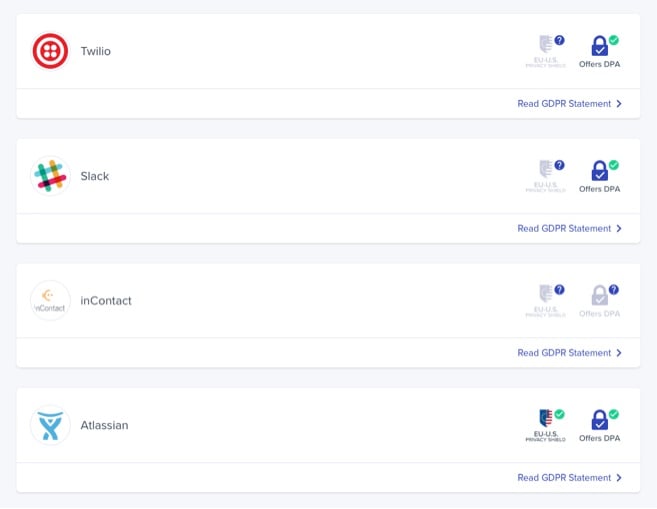There’s never a dull moment in the life of a startup marketer. To be successful, you need to live up to the increasing demands of customers in a crowded marketplace, employ creative ways to balance resources, and overcome challenges associated with constantly evolving digital environments.
We are constantly concerned with safely boosting brand awareness and optimizing the funnel. Then there are changes in customer experience, tactics for ethically making the most of audience data, views on brand purpose and the continued pressure for digital transparency – all issues that cause major concern among marketers, according to one recent WARC survey of industry professionals.
Let’s zoom in on three of the most pressing and timely challenges and some recommended ways that marketers can overcome them.
Sponsored: Visit our Dell partner page for discounts and exclusive offers
Paid media measurement woes
Nearly half of the WARC survey’s top concerns are related to advertising and media buying, with ad viewability being the most alarming among both agencies and brands. Brand safety, ad blocking and ad fraud are also keeping today’s marketers up at night.
Ad fraud’s drain on marketing budgets is well documented. Recent reports suggest that ad fraud will cost brands $19 billion globally this year, an equivalent of $51 million per day. Marketers must beware of paying for non-human “views” of banners on publishers’ sites, click farm activity on social ads and competitors depleting search ad budgets with fraudulent clicks.
To curb potential click fraud when buying ad banners, demand transparency from your publishers. Inquire where their traffic comes from, and assuming they have nothing to hide, they will provide you with data on their sources. Investing in long-term relationships built on trust with vendors is what makes this possible.
Another smart tactic is to exclusively buy media from the social media advertising platforms, so that there are no third-party supply-side networks involved in the process. This will eliminate much potential for ad fraud, with the exception of clicks from fake profiles, which are less of an issue nowadays.
Google and Bing are doing their share to protect customers from click fraud, but these efforts are slow and incomplete, and they’re aimed at stopping fraudulent clicks globally, so they don’t take into account the nuances of any given advertiser’s specific situation. This is problematic, as fraudulent activity differs considerably: while 10 clicks from the same IP address in a period of a day is completely normal for one advertiser, another might see it as click fraud.

When it comes to search ad fraud detection, prevention and protection, ClickCease’s algorithms work in the background to block fraudulent IPs automatically. Their software tracks each click on your Google AdWords and Bing Ads campaigns, scoring it according to dozens of parameters and labeling it as innocent or fraudulent. The tool can even file claims for refunds on your behalf.
Related: GDPR: What Happens Next?
Reverberations surrounding GDPR
More than one-fifth of the WARC survey’s respondents pointed to consumer data regulation, such as GDPR, as a big concern this year. The much dreaded and feared EU General Data Protection Regulation (GDPR) regulation took effect on May 25, 2018, enabling EU citizens to have the final say on how their data is used.
The EU is comprised of 28 countries and 510 million people – a sizeable number, and some 13 percent of the world’s internet population. Though GDPR policy is only binding when it comes to audiences based in Europe, in today’s global village, GDPR will impact your startup no matter where you are located. Consumer consent will be required for personally identifiable information (PII) collection, sharing and usage, and “data rights” will entitle individuals to see, edit and delete data that any third party has on them.
Gaining consent for PII use in marketing and advertising is becoming the new norm, as GDPR stipulates transparency compliance and privacy notices. Penalties for those who breach GDPR are fierce, with fines of up to 4 percent of annual global turnover or €20 million, whichever is greater.
So how do you play to this change? First, document your GDPR plan, outlining your rationale and the challenges you face, so you have some proof of the efforts you have made to comply. Next, avoid engagement with with non-GDPR-compliant partners. Review the terms of service of your various marketing platforms and ad tech vendors so you can be sure you won’t be held liable for any transgressions. Resources like Siftery’s GDPR Checker can help a great deal in this regard.

Dealing with data privacy vigilance also calls for adjusting your organization’s expectations. Your European ad performance and spend levels are likely to feel the pinch. Programmatic partners with sophisticated targeting will have a harder time reaching your ad goals, given the new limits on their ability to maintain audience member profiles. Revise your strategy accordingly, and find alternate ways to direct your ad spend.
As personalized targeting solutions become less viable, smart marketers will favor search and contextual advertising networks. Again, exploring direct relationships with publishers, as opposed to ad networks, will result in greater transparency and traffic of higher quality.
Sign Up: Receive the StartupNation newsletter!
Brands search for their own voices
As the technological landscape changes, marketers are forced to consider the audio characteristics of their brands. According to WARC’s survey, while 86 percent of brands have visual guidelines, only 17 percent have audio guidelines at this point.
Think of the potential in product discoverability via voice search optimization, audio content, and even opportunities for people to use your product via smart speakers and virtual assistants. Voice is an area marketers cannot overlook.
Voice already fuels some 20 percent of Google searches, a figure that is expected to reach 50 percent by 2020.
As smart speakers and similar technologies are rapidly adopted, studies show that voice is gaining traction in replacing type and swipe activity. Gadgets like these present a gateway to people’s homes and cars, and the majority of users report having made a purchase directly through their voice assistants.
But now that we’re closer to consumers in their intimate moments than ever before, how can you make sure your brand is suggested as the digital voice assistant’s top pick at the end of a query?
Marketers optimizing for voice search will need to think like script writers who anticipate queries and inspire potential buyers. Marketers must optimize for “featured snippets,” the equivalent of a voice search box, because that’s what the voice search engine will read back to searchers. To be the single result for a voice search, your content has to be the featured snippet result.
You’d also be well advised to invest in audio content, as Google is in the process of developing a slew of sound file content indexing and discovery engine opportunities. We need to shift our thinking from keywords to questions your content should answer. Sophisticated semantic search, originally introduced by Google in 2013, attempts to discern the searcher’s intent, rather than keyword matches, to find the most relevant search results.

To truly master voice marketing, think about the top modes of interaction that you want people to have with your product, and how those interactions translate well to voice interfaces. You can even roll out Alexa skills without needing to code at all.
Those best prepared for the shift to voice marketing will be the winners in this unchartered territory. There is opportunity in being bold and proactive, as your competitors are likely to tiptoe cautiously with voice marketing, waiting until it’s become a more established channel.
In conclusion
Advertising and marketing in these technologically advanced times is not for the faint of heart. We’ve got new regulations to contend with, new technologies to adapt to, and fraudulent practices that don’t ever seem to go away.
Keep your eyes and ears open, and never stop learning in order to maintain your competitive edge.






